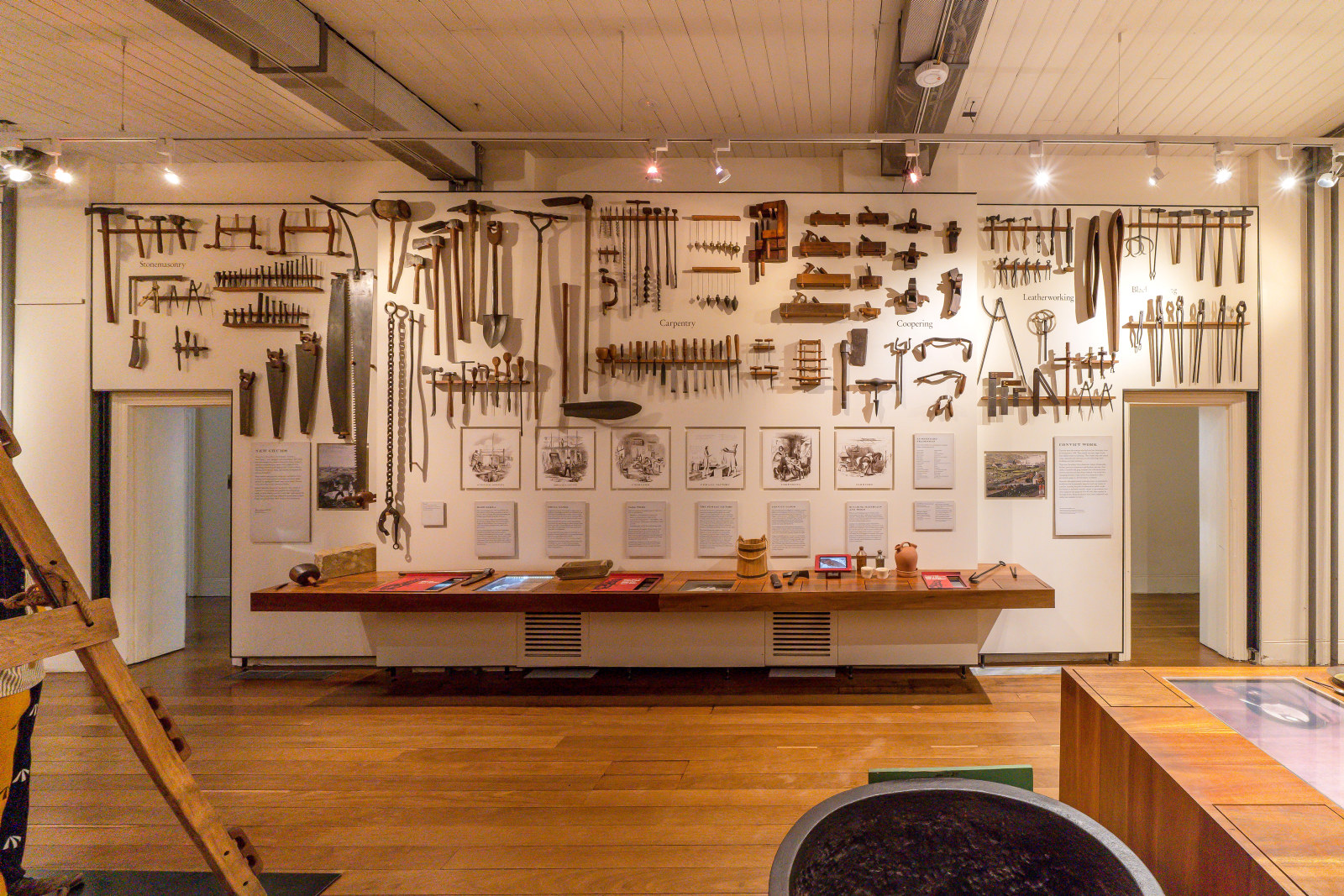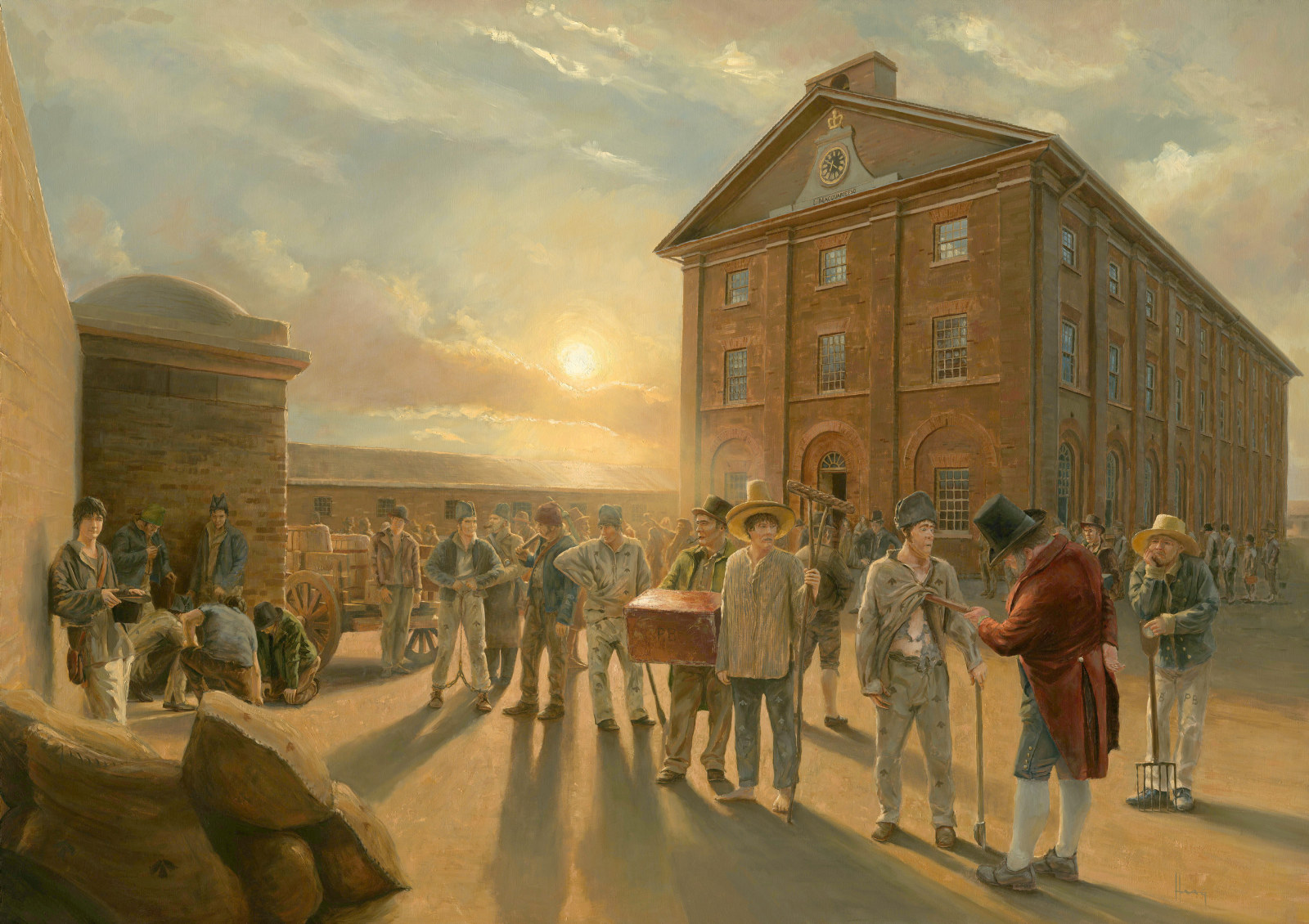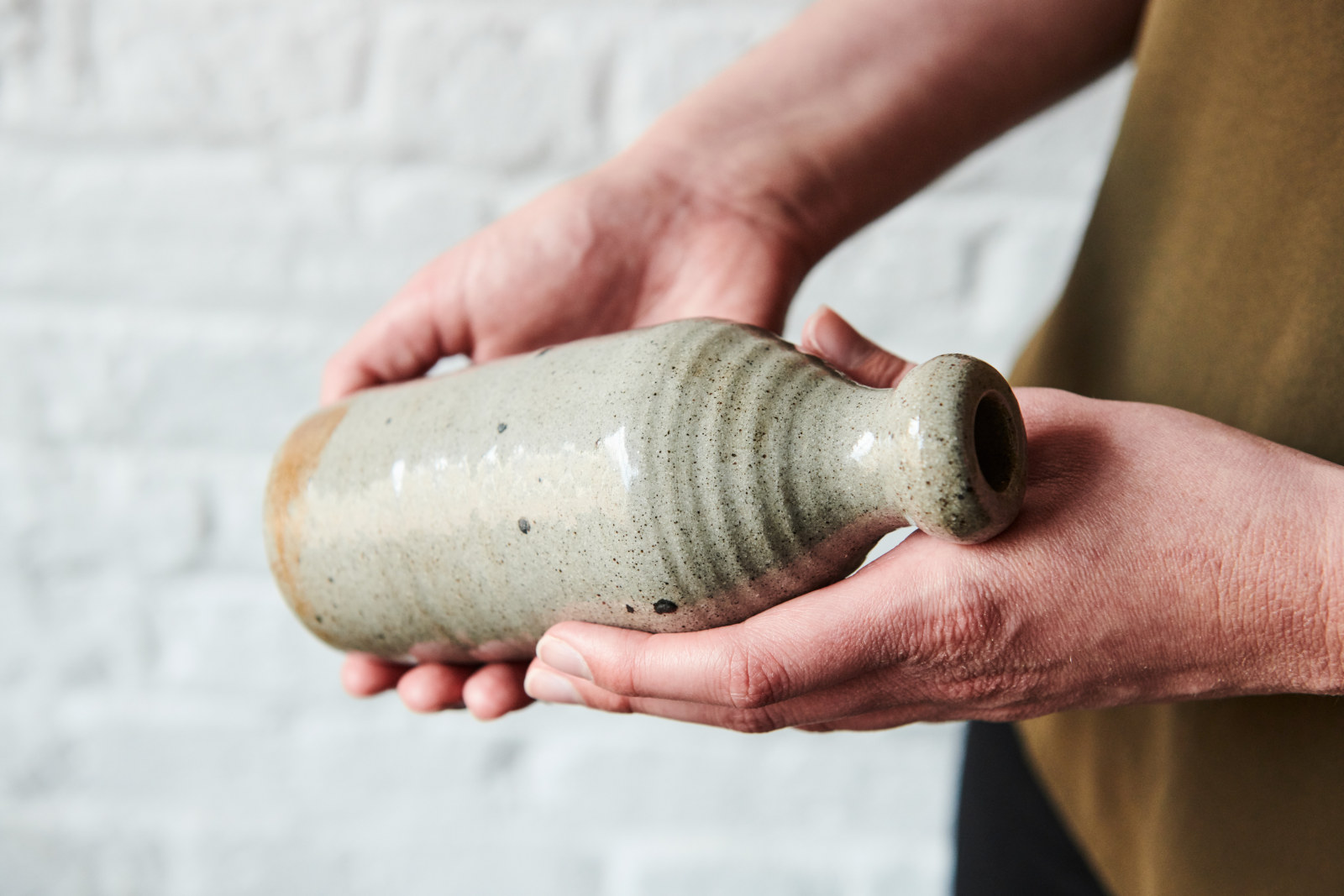Leg Irons, bar link
Early to mid nineteenth century
Known as darbies or slangs in the convict ‘flash’ slang language, leg irons came in various shapes and sizes. These bar link leg irons weigh about 7 ½ pounds (3.4 kilograms), and were worn by troublesome convicts working in iron gangs, or to restrain men awaiting trial on serious crimes. This type of leg iron with long bar links is seen in images of convicts in England from the early nineteenth century, suggesting that this set was manufactured there, rather than in the colony.
The leg irons that convicts wore on the transportation ships were removed on arrival in the colony, but plenty of convicts soon found themselves back in irons. By order of a magistrate, leg irons were fitted onto the ankles of those who committed secondary crimes, such as running away, trying to escape the colony, highway robbery or selling government property. They were then put to hard labour in iron gangs for several months or longer - one of the worst punishments that could be given to convicts. These men had to wear special trousers that buttoned up the sides, so they could be taken on and off around the leg irons.
Leg-irons were made by convict blacksmiths at Sydney’s lumberyard after those sent from England proved to be inferior and easily slipped off. Irons were affixed to and struck off convicts’ ankles by the blacksmiths.
The clanking of the fetters had a dismal sound ; but the men seemed to walk lightly along… some of the worst characters had rods of iron fastened up betwixt the limbs.
John Banks, Australia and the East, 1840, 127.
Published on
Related

Convict Sydney
Objects
These convict-era objects and archaeological artefacts found at Hyde Park Barracks and The Mint (Rum Hospital) are among the rarest and most personal artefacts to have survived from Australia’s early convict period

Convict Sydney
Convict Sydney
From a struggling convict encampment to a thriving Pacific seaport, a city takes shape.

Learning resources
Explore our range of online resources designed by teachers to support student learning in the classroom or at home